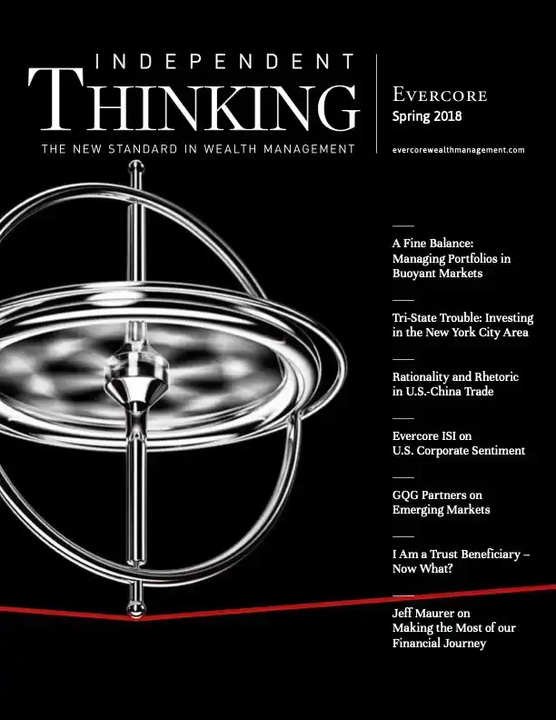Private fund principals have access to unique planning strategies that leverage both carried and capital interests to shelter assets from transfer taxes, and reduce and defer income taxes. Now is the time to take advantage of these strategies.
As described here, the lifetime individual federal gift, estate and GST tax exemptions are currently projected to drop to an estimated $7.16 million as of January 1, 2026, from the current $13.61 million per individual. Until then, a married couple that gifts $27.22 million to a trust for the benefit of children and grandchildren before the sunset could potentially avoid over $5 million of estate tax at the current 40% rate, and also possibly save heirs future gift, estate and GST tax on any growth of those assets with proper planning. Even if the exemptions are not reduced, gifting assets lowers estate taxes by 40 cents for every dollar of growth in the initial gift and could avoid additional state estate tax and GST tax.
So, what should private equity, private credit, and venture capital fund principals do? The following planning strategies could be considered:
The Vertical Slice
The ideal asset to gift is one with a low value at the time of transfer with large upside potential. If you give $10 million into a trust that grows to $50 million at the time of your death, you have effectively moved $40 million of growth out of your taxable estate, saving heirs roughly $16 million in transfer taxes. Carried interest in a newly formed fund is the ideal asset to gift, as it arguably has a relatively smaller value at the initial closing but may have significant value in the coming years. Therefore, the carry can be gifted at a very low “cost” with potentially very high long-term value.
The problem with gifting carried interest is that the IRS, under Code Section 2701, does not allow a transfer of one interest in an asset while retaining another interest in the same asset. Fund managers often hold General Partner, Limited Partner and carried interests in their funds. If a manager tried to gift just the carry, the IRS would deem carried and all capital interests in the fund as a gift, which would be problematic and/or administratively impossible. Fortunately, there are two potential solutions to this problem.
The first is an exception to Section 2701 called a vertical slice. A fund manager can take a proportionate share of all their capital and carried interests in a fund and gift that “slice” to a grantor trust for the benefit of children and future generations. The vertical slice strategy is not as powerful as gifting only the carry, but it can transfer meaningful capital at its lowest valuation and potentially shelter future growth from estate taxation. However, there are certain considerations that must be kept in mind. The interests that are transferred will be subject to a proportionate share of capital contribution obligations. The trust that receives the interest should have enough liquidity to cover these capital calls. The manager’s advisors will need to be aware of any vesting requirements of the carried interest – unvested interests cannot be gifted. They will also need to know about any management fee offsets or other compensation arrangements.
Carry Derivative Contract Sale
The other strategy that fund principals can use is a sale of a derivative contract tied to the performance of a carried interest. A contract can be sold to an irrevocable trust that gives the trust some or all of the economic benefit of the carried interest above a hurdle over a period of time. This contract can be reasonably valued by a professional appraiser. Since the manager is not actually giving away the interest, only the economic benefit, a forced gift of the capital interest under Section 2701 is avoided. A derivative strategy could offer several advantages: It is administratively less burdensome; there are no capital call or vesting issues; and the most impactful asset from a tax savings perspective is gifted at a lower exemption cost than a vertical slice. However, given the complexity involved, this strategy may carry more audit risk. Principals also will need to beware of potential losses if the carry does not grow beyond the hurdle rate, death occurs before the contract expires (the contract will need to settle at that date), or a potential liquidity crunch if the contract term ends with a high carry value without any distributions.
Note that fund principals also may want to consider a Family Limited Partnership or Family LLC to pool other assets under one umbrella together with either one of the foregoing strategies. This can allow for easier administration and potentially further discounts to the valuation of the assets held in the partnership.
Charitable Remainder Trust or Charitable Lead Trust
Successful mature funds generally have high valuations with relatively predictable cash flows. Fund managers who regularly donate to charity could consider transferring a portion of their mature funds to a Charitable Remainder Trust, or CRT, to reduce and defer income taxes. A CRT pays the fund manager a fixed annuity payment or percentage of the fund’s value every year. At the end of the trust’s term, any remaining value is transferred to a charitable beneficiary, which could include a donor-advised fund or private foundation. A CRT is a tax-exempt entity; therefore, when assets are transferred into the trust, the transferor receives an income tax deduction based on the estimated present value of the remainder, and the trust does not pay tax on any income generated by the fund. Instead, the fund manager will only pay a portion of the income taxes due upon receipt of the annual payments, making this an income tax deferral strategy.
Depending on the fund manager’s goals, a Charitable Lead Trust, or CLT, also could be an option. A CLT is similar to a CRT, except that the charity receives the annual payment, and the remainder can be transferred to heirs. A CLT can be set up as a grantor trust or a non-grantor trust. With a grantor trust, the fund manager receives an upfront charitable deduction but is subject to tax on the trust’s income each year. With a non-grantor trust, there is no upfront charitable deduction, but the trust receives a charitable deduction each year and the fund manager is not subject to tax on the trust’s income. Unlike a CRT, which is commonly used as an income tax planning strategy that also benefits charity after death, a CLT typically is utilized as more of an estate tax planning strategy that also benefits charity during life.
GRATs and Sales to IDGTs
Fund managers who have already used their exemptions or who want to transfer only growth in their funds can use “freeze” strategies. The two most common are grantor retained annuity trusts, or GRATs, and sales to intentionally defective grantor trusts, or IDGTs. To summarize simply, GRATs transfer growth above the Section 7520 rate (4.4% as of October 2024) out of the estate while using almost no federal gift and estate tax exemption. One of the downsides of a GRAT, however, is that the GST exemption amount cannot be used effectively, making it less efficient for multigenerational asset transfers. Another option with potential for GST tax savings for transfers to trusts earmarked for grandchildren and beyond is a sale to an IDGT. (See a recent related article.) In this case, cash is gifted into a trust – typically 10% of the asset purchase amount – and the fund manager sells assets to the trust in exchange for a promissory note. Because the IDGT is a grantor trust, the sale to the trust is not treated as a taxable event for income tax purposes, but the asset can be removed from the grantor’s estate for gift, estate and GST tax purposes. The IDGT uses the cash and income received from the asset to pay annual interest on the note – often at the lowest applicable federal rate as published by the IRS. At the end of the promissory note’s term, the IDGT eventually repays the note while retaining all the growth in the asset minus the interest and principal paid back to the fund manager.
When deciding what strategies to use, private fund principals will need a team of advisors to help navigate the options in the context of long-term goals and giving viability. Proper execution and ongoing administration also are essential. Since this type of planning is highly technical, it should only be implemented with a team of advisors that includes attorneys, accountants, appraisers, and wealth managers who specialize in this area.
Sean Brady is a Managing Director and Wealth & Fiduciary Advisor at Evercore Wealth Management and Evercore Trust Company. He can be contacted at [email protected].










